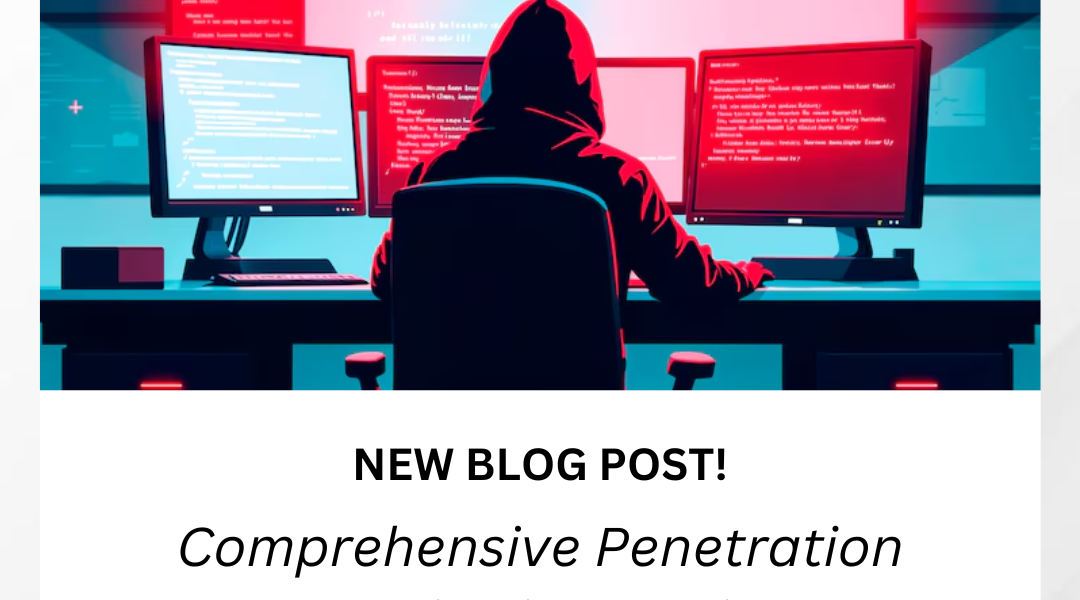In today’s digital age, cybersecurity has become a paramount concern for organizations of all sizes. As cyber threats continue to evolve, it’s imperative to implement robust security measures to protect sensitive data and systems. Penetration testing is a crucial strategy to identify and address vulnerabilities before malicious actors can exploit them.
What is Penetration Testing?
Penetration testing, often abbreviated as “pen testing,” is a simulated cyberattack conducted to identify and assess security weaknesses in a system or network. By mimicking the tactics of malicious hackers, penetration testers can uncover vulnerabilities that could be exploited by real-world attackers.
Why is Penetration Testing Important?
- Proactive Security: By identifying vulnerabilities before they can be exploited, penetration testing allows organizations to take proactive measures to enhance their security posture.
- Compliance Adherence: Many industries have stringent security regulations, and penetration testing can help organizations ensure compliance with these standards.
- Risk Assessment: By understanding the potential impact of a security breach, organizations can prioritize their security efforts and allocate resources effectively.
- Enhanced Reputation: Demonstrating a commitment to cybersecurity can improve an organization’s reputation and customer trust.
Types of Penetration Testing
There are several types of penetration testing, each targeting specific aspects of an organization’s IT infrastructure:
- Network Penetration Testing: This type of testing focuses on identifying vulnerabilities in an organization’s network infrastructure, including routers, switches, and firewalls.
- Web Application Penetration Testing: Web application testing targets vulnerabilities in web applications, such as SQL injection, cross-site scripting (XSS), and cross-site request forgery (CSRF).
- Wireless Penetration Testing: Wireless testing aims to uncover weaknesses in wireless networks, including Wi-Fi networks, Bluetooth, and NFC.
- Physical Penetration Testing: This type of testing involves physically accessing a facility to identify vulnerabilities in security controls, such as locks, alarms, and security personnel.
The Penetration Testing Process
The penetration testing process typically involves the following steps:
- Planning and Reconnaissance: The tester gathers information about the target system, including its network topology, software, and hardware.
- Scanning and Enumeration: The tester scans the target system to identify potential vulnerabilities and services running on the system.
- Vulnerability Analysis and Exploitation: The tester analyzes the identified vulnerabilities and attempts to exploit them to gain unauthorized access.
- Post-exploitation: Once access is gained, the tester may further explore the system to assess the potential impact of the vulnerabilities.
- Reporting: The tester prepares a detailed report outlining the findings, including the vulnerabilities identified, their severity, and recommendations for remediation.
Tools and Techniques Used in Penetration Testing
Penetration testers employ a variety of tools and techniques to conduct their assessments. Some common tools include:
- Network scanning tools: Nmap, Nessus, OpenVAS
- Web application vulnerability scanners: Burp Suite, OWASP ZAP
- Password cracking tools: John the Ripper, Hydra
- Exploit frameworks: Metasploit, Exploit-DB
Common Vulnerabilities Identified Through Penetration Testing
- SQL injection: Exploiting vulnerabilities in web applications to inject malicious SQL code.
- Cross-site scripting (XSS): Injecting malicious scripts into web pages to steal user data or hijack sessions.
- Cross-site request forgery (CSRF): Tricking users into performing actions on a website without their knowledge.
- Weak passwords: Using easily guessable passwords.
- Misconfigured security settings: Incorrectly configured security settings on servers and applications.
Benefits of Penetration Testing
Penetration testing offers numerous benefits for organizations, including:
- Enhanced Security: Identifying and addressing vulnerabilities before they can be exploited by attackers.
- Compliance with Regulations: Ensuring compliance with industry regulations such as PCI DSS and HIPAA.
- Improved Risk Management: Assessing the potential impact of security breaches and implementing appropriate measures.
- Increased Customer Trust: Demonstrating a commitment to security and protecting sensitive customer data.
Challenges and Limitations of Penetration Testing
While penetration testing is a valuable tool, it’s important to be aware of its limitations:
- Time-Consuming: Penetration testing can be a time-consuming process, especially for large and complex systems.
- Costly: Hiring experienced penetration testers and using specialized tools can be expensive.
- False Positives: Some tools may generate false positive alerts, leading to unnecessary investigation.
- Ethical Considerations: Penetration testing must be conducted responsibly and ethically, avoiding any unauthorized access or damage to systems.
Best Practices for Conducting a Successful Penetration Test
To ensure the effectiveness of a penetration testing engagement, consider the following best practices:
- Clear Scope and Objectives: Define the scope and objectives of the test to ensure that all critical areas are covered.
- Informed Consent: Obtain written consent from the organization being tested to avoid legal issues.
- Ethical Hacking Principles: Adhere to ethical hacking principles and avoid causing any harm to the target system.
- Continuous Testing: Conduct regular penetration tests to identify and address emerging threats.
- Collaboration with Security Teams: Work closely with security teams to share findings and implement remediation measures.
Case Studies
Penetration testing is an essential tool for organizations seeking to strengthen their cybersecurity posture. By proactively identifying and addressing vulnerabilities, businesses can significantly reduce their risk of cyberattacks. By understanding the different types of penetration testing, the tools and techniques used, and the best practices for conducting successful tests, organizations can safeguard their valuable assets and protect their reputation. Contact us today for a FREE CONSULTATION on how you can carry out Penetration Testing For Your Organization

